Visit the Alcazaba of Malaga
Constructed by the Moors between 1057 and 1063, the Alcazaba of Malaga rivaled the magnificence and impressive defensive structures of Granada’s Alhambra during its heyday. Situated at the base of Mount Gibralfaro, this vast citadel dominated the city of Malaga with its sprawling expanse covering 15,000 square meters. The fortress boasted formidable defenses, comprising of double walls and 110 towers, expertly safeguarding both the harbor and the city against potential threats.
This easy guide shows you how to visit the main site and unique vista points and places of interest including Gibralfaro castello which is whee the Moorish kings lived with their family within the Alcazaba.
Alcazaba of Malaga: A Historical Gem with Breathtaking Views and Cultural Treasures

A brief history of the Alcazaba of Malaga
The Alcazaba of Malaga holds a rich history that dates back to the early 11th century. It was built by the Moors, a Muslim community that ruled over a significant part of the Iberian Peninsula during that time. Construction of the Alcazaba began in 1057 and was completed around 1063.
Originally serving as a defensive fortress and palace for the ruling Moorish governors, the Alcazaba played a crucial role in protecting the city of Malaga and its residents. Its strategic location at the foot of Mount Gibralfaro provided an advantageous vantage point, allowing the Moors to oversee and control the surrounding area.
Over the centuries, the Alcazaba underwent several expansions and renovations under different rulers, including the Nasrid dynasty. The Nasrids were responsible for the iconic additions to the Alhambra in Granada, and their influence can be seen in some of the architectural elements of the Alcazaba.
After the Reconquista in the late 15th century, when Catholic forces recaptured the Iberian Peninsula from the Moors, the Alcazaba was partially adapted for Christian use. However, it gradually fell into disrepair and was even used as a stone quarry for other construction projects.
In the 20th century, efforts were made to restore and preserve the Alcazaba as a significant historical and cultural monument. Today, it stands as one of Malaga’s most important landmarks, attracting tourists and history enthusiasts alike, who come to admire its fascinating blend of Moorish and Spanish architecture, its impressive fortifications, and the stunning views it offers over the city and the Mediterranean Sea.

How to get to the Alcazaba
To reach the Alcazaba of Malaga, there are several convenient transportation options available:
By Foot: If you’re already in the city center of Malaga, you can walk to the Alcazaba, as it is located not far from the central area. Follow signs or use a map to guide you to the fortress.
By Public Transport: Malaga has an efficient public transportation system. You can take a bus to the Alcazaba from various locations in the city. Check the local bus routes and schedules to find one that stops near the fortress.
Line 3 bus. best. Take the bus from Paseo del Parque – Plaza de la Marina to Paseo del Parque and costs 2 Euro.
By Taxi: Taxis are widely available in Malaga and can take you directly to the Alcazaba. You can either flag one down on the street or find a taxi rank in the city.
By Car: If you prefer to drive, you can rent a car or use a ride-sharing service to get to the Alcazaba. There are parking facilities nearby, but they can get busy during peak tourist seasons.
Once you arrive at the Alcazaba, you can purchase tickets to enter and explore the historical site. It’s advisable to check the opening hours and ticket prices in advance to plan your visit accordingly. Enjoy your time at this remarkable fortress and immerse yourself in its fascinating history and architecture!
Check out the entry and ticketing information here for more details, prices based on different factors.
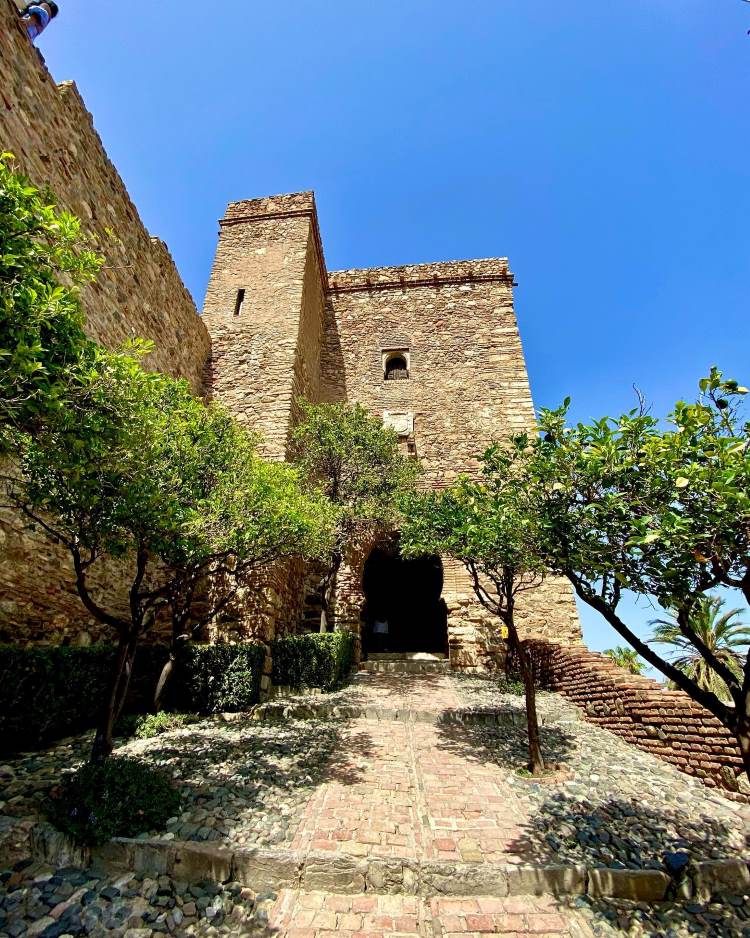
Major attractions and things to see at the Alcazaba
The Alcazaba of Malaga is a captivating historical site with numerous attractions and things to see. Here are some of the major highlights to explore:
Palace of the Alcazaba: The central area of the Alcazaba houses the palace, where you can marvel at the exquisite Moorish architecture. The courtyard, adorned with beautiful gardens and fountains, is a serene and picturesque spot to explore.
The Ramparts and Towers: Walk along the ancient walls and ramparts of the fortress to experience breathtaking views of the city of Malaga and the Mediterranean Sea. The Alcazaba has around 110 towers, each with its unique charm and historical significance.
The Gardens: The Alcazaba is known for its lush gardens, offering a peaceful retreat within the fortress. The well-maintained gardens feature a variety of plants, flowers, and citrus trees, providing a pleasant environment to relax and enjoy nature.
Archeological Museum: Within the Alcazaba complex, there’s an archeological museum that displays artifacts excavated from the site. The museum provides insights into the history and culture of the various civilizations that inhabited the area.
The Courtyards: Throughout the Alcazaba, you’ll encounter several charming courtyards, each with its unique design and architectural elements. These courtyards served as vital spaces for the daily life of the Moorish rulers.
The Nazari Palace: This section of the Alcazaba showcases the Nasrid architecture, which shares similarities with the Alhambra in Granada. Admire the intricate stucco work, ornate ceilings, and decorative tile designs.
The Puerta de la Bóveda: This striking arched gateway is an iconic entrance to the Alcazaba. It is a great spot for taking photographs and experiencing the grandeur of the fortress.
Panoramic Views: As you explore the Alcazaba, take advantage of the elevated vantage points to enjoy sweeping panoramic views of Malaga and its surroundings.
Tip – Remember to wear comfortable shoes as the Alcazaba involves some walking and climbing. Also, consider joining a guided tour to gain deeper insights into the historical significance and stories behind this remarkable monument. Whether you’re a history enthusiast or simply appreciate beautiful architecture, the Alcazaba offers a fascinating journey through time and culture.
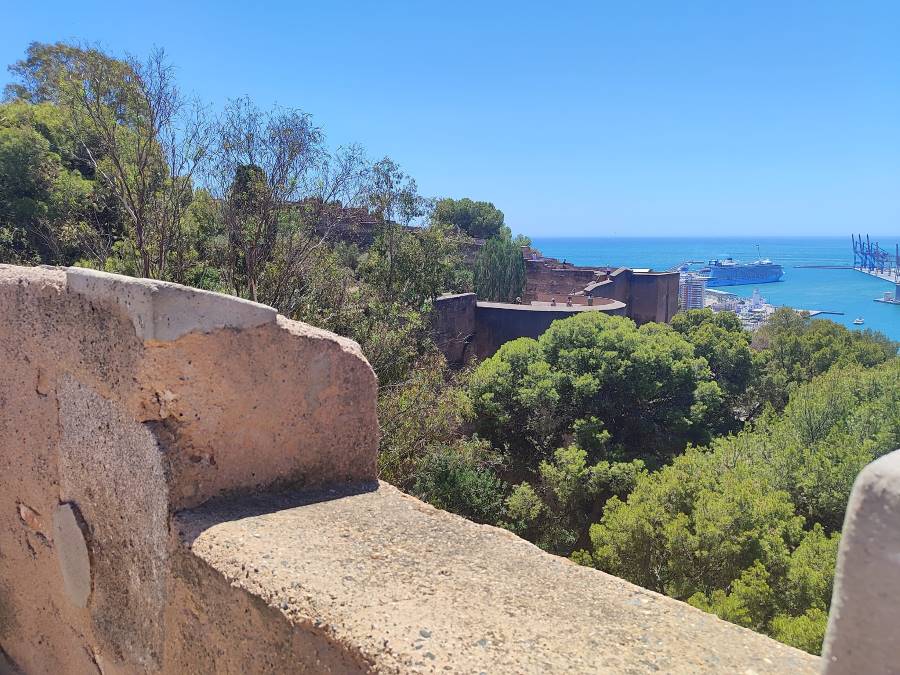
Best Viewpoints
Check out the best viewpoints within the Alcazaba of Málaga, one of the city’s most iconic historical sites:
Torre del Cristo (Christ’s Tower)
- What to Expect: One of the highest points in the Alcazaba offering broad views of the city and port.
- Highlights: Excellent spot for taking in the layout of Málaga’s historic center and distant coastline.
- Tip: Visit during early morning or late afternoon for softer light and better photos.
Patio de los Surtidores (Courtyard of Fountains)
- What to Expect: A peaceful courtyard with Moorish design and glimpses of the city through its arches.
- Highlights: Subtle views framed by elegant architecture and garden details.
- Tip: A good place to pause and take in the view in a shaded, quiet setting.
Walkways Along the Fortress Walls
- What to Expect: Narrow paths along the defensive walls provide changing angles of the city, cathedral, and Gibralfaro hill.
- Highlights: Great for panoramic photos and feeling immersed in the history of the structure.
- Tip: Walk the full perimeter to catch views in every direction.
Views Toward Gibralfaro Castle
- What to Expect: From within the Alcazaba, you can see up toward Gibralfaro, giving context to the old Moorish defense system.
- Highlights: Combines landscape and architecture with a strategic perspective on how the two fortresses were connected.
- Tip: Best viewed in the late afternoon when the sun lights up Gibralfaro.
View of the Cathedral from the Walls
- What to Expect: Several spots along the outer wall offer partial views of the Málaga Cathedral’s unfinished tower.
- Highlights: Iconic angle for photography, with ancient stone walls framing the cathedral.
- Tip: Look for this near the eastern wall segments.
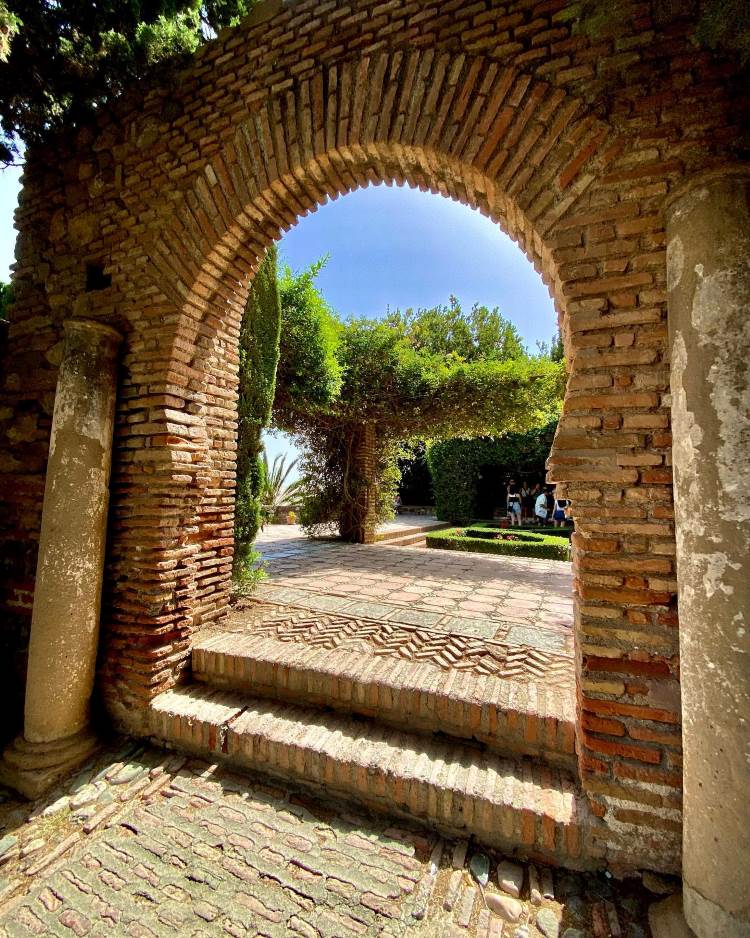
More inside tips to visiting the Alcazaba or Malaga
Here are some inside tips to enhance your visit to the Alcazaba of Malaga:
Early Arrival: It’s a good idea to arrive early in the morning or during the weekdays, especially during the peak tourist season. This way, you can avoid large crowds and have a more serene experience exploring the fortress.
Comfortable Attire: Wear comfortable shoes and clothing, as you’ll be doing some walking and climbing. The terrain can be uneven in some areas, so appropriate footwear will ensure a more enjoyable visit.
Water and Sun Protection: Malaga can get quite hot, especially in the summer months. Carry a water bottle and stay hydrated throughout your visit. Don’t forget to apply sunscreen, wear a hat, and bring sunglasses to protect yourself from the sun.
Audio Guide or Guided Tour: Consider using an audio guide or joining a guided tour. This will provide you with in-depth information about the history, architecture, and significance of the Alcazaba, making your visit more enriching.
Photography Tips: The Alcazaba offers fantastic photo opportunities. For the best shots, visit the fortress during the golden hours of sunrise or sunset when the light is soft and the shadows are more dramatic.
Picnic and Rest Areas: The gardens and courtyards of the Alcazaba are perfect places for a peaceful picnic. Pack some snacks and find a shaded spot to relax and enjoy the surroundings.
Combine with Gibralfaro Castle: The Alcazaba and Gibralfaro Castle are located close to each other. Consider visiting both sites on the same day to make the most of your trip. The combination ticket usually offers a discount.
Weekend Free Admission: If you happen to be in Malaga on a Sunday, the Alcazaba offers free admission during the last two hours before closing. Take advantage of this opportunity to explore the fortress without any cost.
Evening Visits: During the summer months, the Alcazaba often hosts evening concerts and cultural events. Check the schedule to see if there are any special events during your visit for a unique experience.
Respectful Behavior: Show respect while exploring the historical site. Do not climb on walls or touch delicate surfaces. Also, keep the area clean by disposing of trash in designated bins.
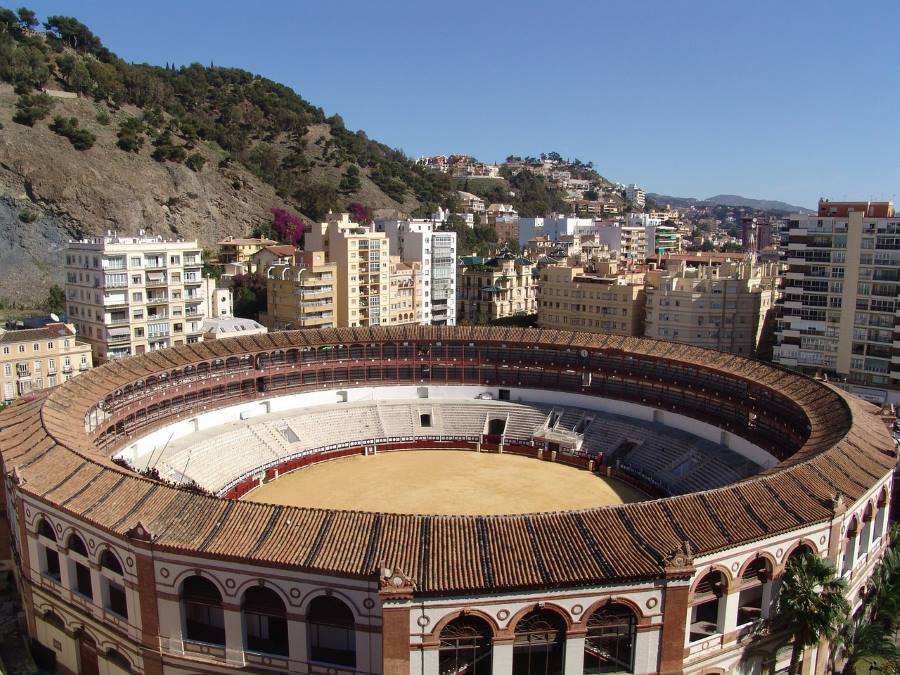
Other attractions to visit close to the Alcazaba of Malaga
Malaga is a vibrant city with a wealth of attractions to explore, many of which are located close to the Alcazaba. Here are some other noteworthy attractions worth visiting nearby:
Gibralfaro Castle: Perched on the hill overlooking the Alcazaba, Gibralfaro Castle offers spectacular views of Malaga and the Mediterranean Sea. The castle itself is a historical treasure, and the walk up from the Alcazaba provides a pleasant experience.
Malaga Cathedral (Catedral de la Encarnacion): Located within walking distance from the Alcazaba, this imposing Renaissance cathedral is known for its unfinished southern tower and stunning interior. It’s a masterpiece of architecture and an essential landmark in the city.
Picasso Museum (Museo Picasso Málaga): Situated in the historic center of Malaga, the Picasso Museum showcases an extensive collection of works by the renowned artist, Pablo Picasso. Art enthusiasts will appreciate exploring the diverse exhibitions.
Malaga Roman Theatre (Teatro Romano): Adjacent to the Alcazaba, you’ll find the well-preserved remains of a Roman amphitheater dating back to the 1st century BC. The site provides insights into the ancient history of Malaga.
Atarazanas Market (Mercado Central de Atarazanas): A bustling food market in the heart of Malaga, offering a wide variety of fresh produce, seafood, and local delicacies. It’s an excellent place to experience the city’s gastronomic delights.
Muelle Uno: A modern waterfront area with a mix of shops, restaurants, and bars. It’s a great place to stroll along the harbor, relax with a drink, and enjoy the views.
Malaga Park (Parque de Malaga): A lovely green space located near the port and the historic center. It’s a peaceful spot for a leisurely walk or a picnic.
Malagueta Beach: If you fancy some beach time, head to Malagueta Beach, just a short walk from the city center. Relax on the sandy shores and take a dip in the Mediterranean Sea.
Centre Pompidou Malaga: An offshoot of the famous Pompidou Center in Paris, this contemporary art museum features a diverse collection of modern artworks.
Calle Larios: Malaga’s main shopping street, lined with shops, cafes, and restaurants. It’s a vibrant pedestrianized area where you can soak in the local atmosphere.
These attractions, along with the Alcazaba, offer a delightful mix of history, art, culture, and leisure experiences, making Malaga a captivating destination for travelers with diverse interests.
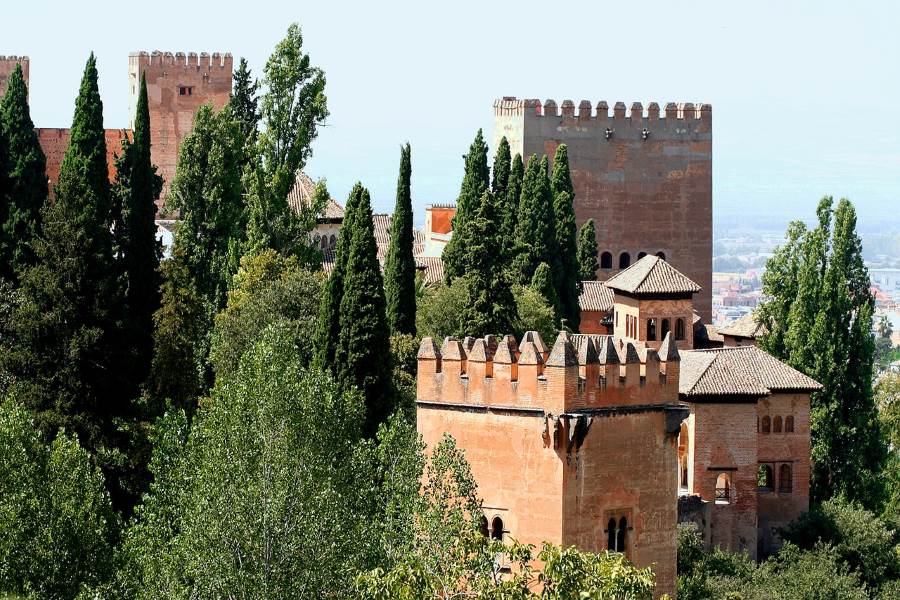
Conclusion to visiting the Alcazaba of Malaga
Visiting the Alcazaba of Malaga is an unforgettable journey through time. This remarkable fortress, built by the Moors over a thousand years ago, offers stunning Moorish architecture, lush gardens, and captivating courtyards. The Nasrid Palace and archeological museum provide fascinating insights into the past. It’s a serene escape with commanding views over the city and the sea. Don’t miss this enriching and rewarding experience, leaving an indelible impression that lingers long after you leave.
Thanks for checking out this post on Visit Spain and Mediterranean, please feel free to check out related topics for you to plan a fun trip to the area.

About author – Noel Morata
After relocating from the United States to Andalusia in 2024, I’ve made it my mission to discover every corner of Spain. Based just east of Granada, I’ve spent over 12 months exploring Andalusia province and the rest of Spain, including multiple extended visits to Granada throughout different seasons. My background in Spanish cultural studies and years of residence and exploring all of Spain have given me unique insight into the region’s historical significance, local customs, and culinary traditions.
I regularly update my guides with the latest information gathered through personal visits and relationships with local tourism officials, always seeking what’s new and exciting in each destination. As a self-proclaimed foodie, I’m passionate about discovering authentic local markets and regional specialties.
Disclosure – some of the links above to various tours, transportation and hotels are affiliate links that benefits our site if you book here and we appreciate your support. The links are competitive, and you are not paying above what other affiliates provide.

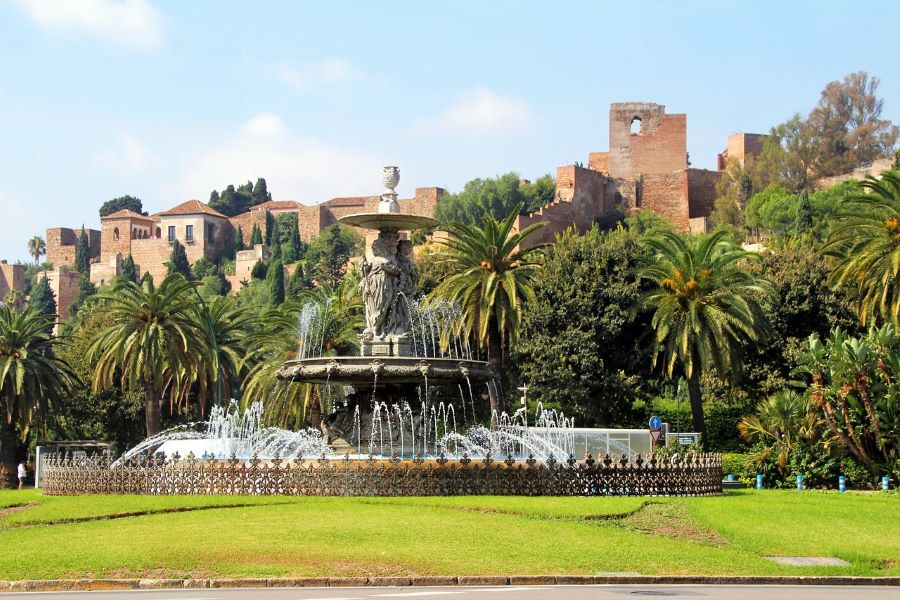
10 thoughts on “Alcazaba of Malaga”